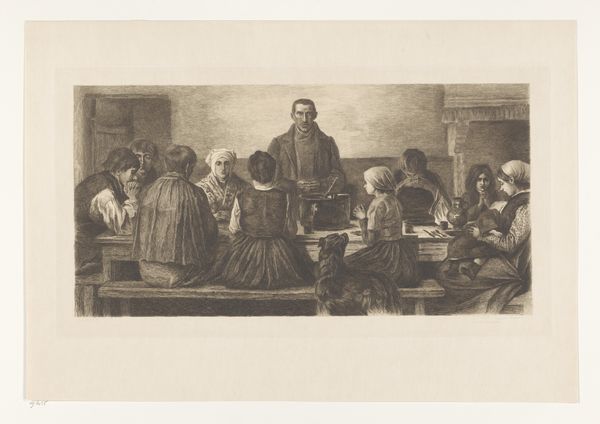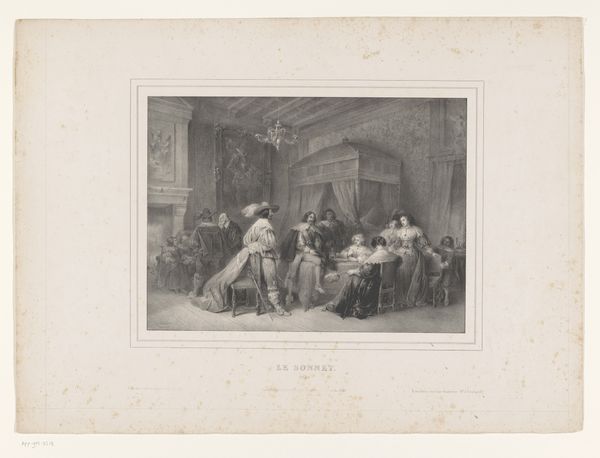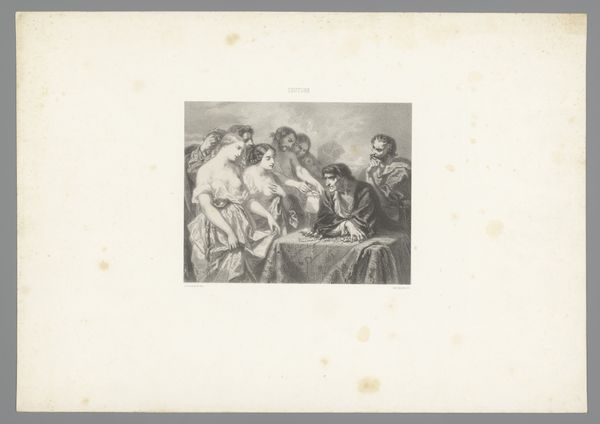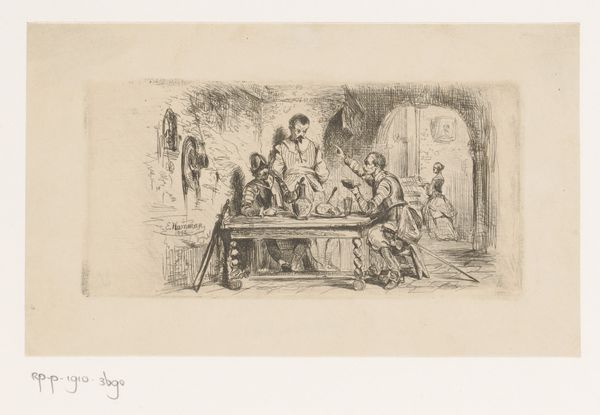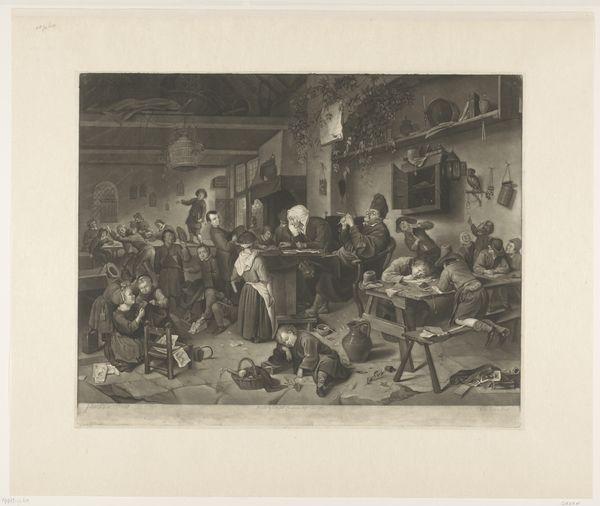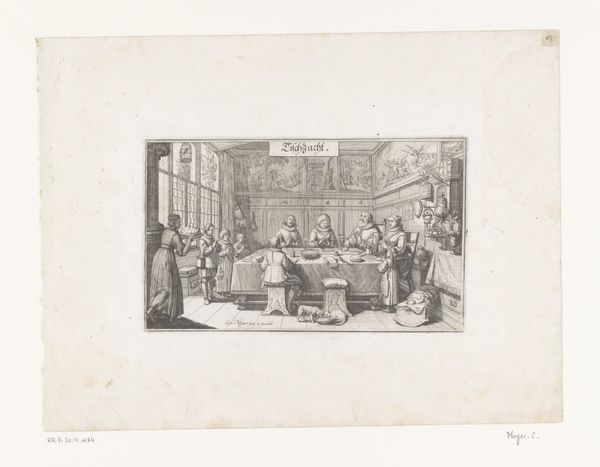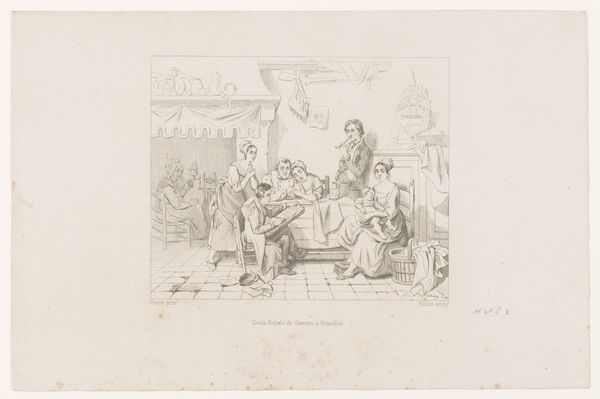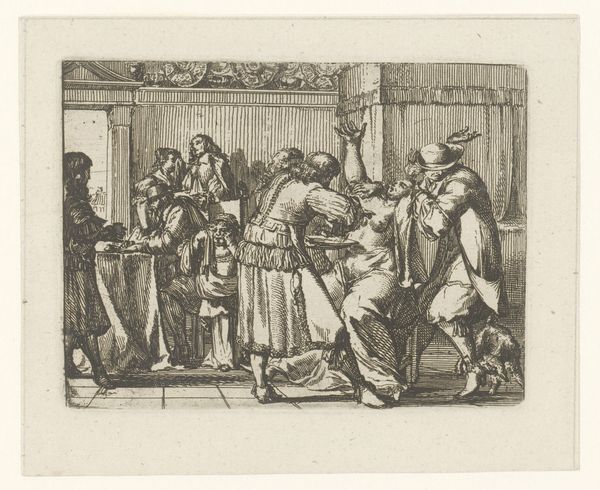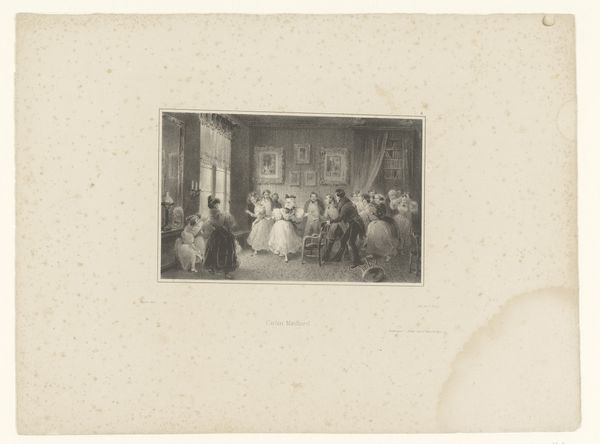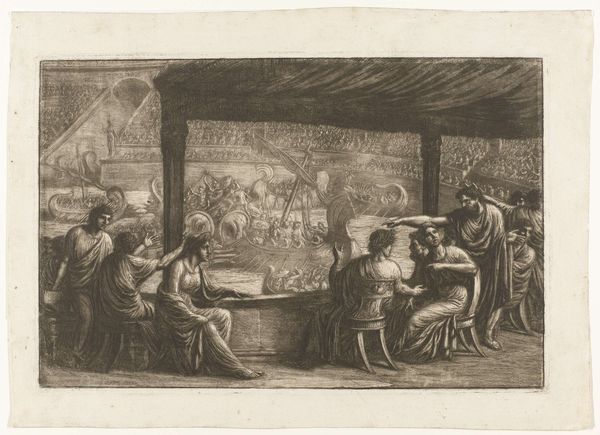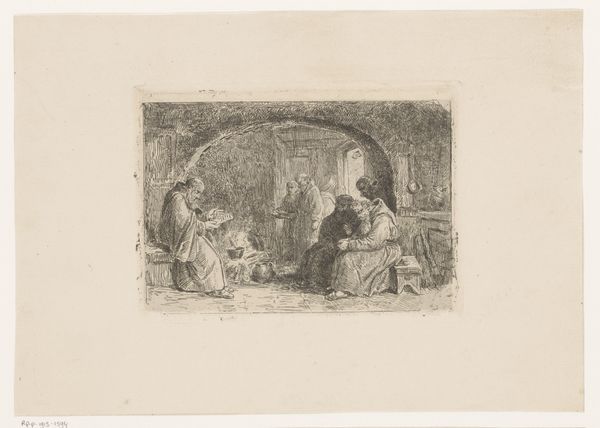
drawing, print, etching
#
portrait
#
drawing
#
medieval
#
narrative-art
# print
#
etching
#
genre-painting
#
realism
Dimensions: height 300 mm, width 547 mm
Copyright: Rijks Museum: Open Domain
Curator: What a scene Louise Danse has presented to us in her etching from 1895, "Family at the table praying before the meal," held right here at the Rijksmuseum. It has this tender intimacy doesn't it? Almost like witnessing a fleeting, sacred moment. Editor: Fleeting and sacred perhaps, but what strikes me immediately is how constructed this intimacy feels. The table dominates the foreground, everyone meticulously placed, all knees fitting almost robotically. It reads like a tableau staged for some kind of social observation. Curator: Interesting! I saw it more as genuine. I felt it pulled back the curtain into a modest home, and I could practically smell the warm stew simmering in that pot on the table! Look how they bow their heads. Do you feel that almost protective gesture encompassing the family unity? Editor: Protective? I see labor etched onto their faces! That's a large gathering—the production involved is palpable! How much food? How were these clothes made, then threadbare, handed down? Where is the industry around this humble table, I ask. This artwork seems preoccupied with romanticising the idea of piety over examining lived realities. Curator: Fair, it's undeniably romanticised. It draws from that almost Medieval aesthetic with the heavy linework, and I think that's the charm. But there's also realism. Like in that dog in the foreground. So very alert, as if he might snarf a dropped scrap the second prayer is over. Editor: Ah, but what IS that pot made of? The linework renders a blurred view—steel, iron? Was it crafted locally? Or purchased from afar and who made THAT table. I look closer at each tool and I want to know what hands produced that tool for that family. It gives so much greater of the actual family context. Curator: The etching almost feels like a snapshot. That single moment stretches into something timeless. It's also genre painting, isn’t it? One slice of daily life immortalized. Editor: For me, the emphasis is on the 'etching' itself. How the print medium democratises image distribution, brings such scenes, however stylised, into more homes. The production itself becomes meaningful. I find myself wondering what would this very family has thought of the printed image portraying themselves to strangers Curator: Hmm, perhaps, maybe it would give them pride? What a lasting monument they'd have over their lives, immortalised and celebrated in our here in Rijksmuseum. A small act of kindness or appreciation captured in black and white, and a slice of what their version of a ‘holy’ life looked. Editor: The means by which this "slice" reaches us is more vital, in a way, than the flavour offered, you see?
Comments
No comments
Be the first to comment and join the conversation on the ultimate creative platform.
